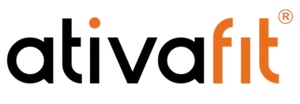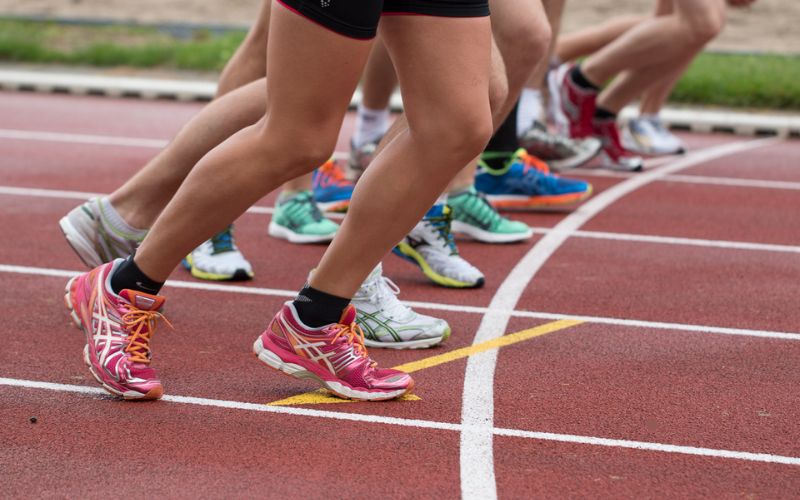Running is one of the most common cardiovascular exercises. Numerous individuals participate in it to lose weight, improve endurance, or overall improve their health. Many runners or people who want to start running often ask: Does running make your legs bigger? Let’s look at what running does to your leg muscles.
How Does Running Make My Legs Bigger?
As you run, particularly uphill or at high speeds, your leg muscles repeatedly contract to push you forward. All this repetition can cause some degree of muscle hypertrophy (muscle growth), particularly in your calf, hamstrings, quadriceps, and glutes.
However, the extent to which your legs enlarge is determined by the type of running you do. Sprinting or uphill running requires more explosive power and generates more muscle mass than steady-state jogging, which is more endurance-oriented and promotes fat burning over muscle building.
The Role of Different Types of Running

Sprinting: Short, intense bursts of running recruit fast-twitch muscle fibers, which contribute to muscle size and strength.
Long-Distance Running: This is mostly recruiting slow-twitch fibers, which are more endurance-oriented than fast-twitch fibers.
Trail Running or Incline Running: Adding resistance to this will encourage more muscle recruitment and minimal growth.
How Quickly Does Running Change Your Body?
Running can begin to transform your body in a matter of weeks, particularly if you're a beginner to exercise. Changes in muscle definition, endurance, and even weight can start to become noticeable in 4 to 6 weeks of consistent running.
However, developing visible muscle mass in the legs through running alone is more time-consuming and will depend on factors such as your running form, diet, rest, and genetics. Sprinting a couple of times a week could lead to noticeable muscle building within 6 to 8 weeks. Conversely, jogging regularly could trim your legs instead of making them larger.
Other Body Changes from Running
In addition to increasing muscle growth, running also aids in fat loss, enhances cardiovascular performance, and sharpens mental acuity. Your clothes may start fitting you better, and you tend to have more energy as your body composition increases.
Role of Nutrients in Building Leg Muscles via Running

Nutrition is crucial for building muscle in your legs through running. To build muscle, you need enough protein, along with a good mix of carbs and healthy fats. Without proper nutrients, your body can't repair or grow muscles, no matter how hard you train.
a) Key Nutrients to Help Leg Muscle Growth
-
Protein: Assists in repairing and growing muscle fibers. Choose lean proteins such as chicken, eggs, tofu, or legumes.
-
Carbohydrates: Fuel your runs and recoveries. Whole grains, vegetables, and fruits are all rich sources of nutrients.
-
Healthy Fats: Support hormone production and muscle functioning. Avocados, nuts, and olive oil are superb options.
-
Water: Hydrates your muscles, supporting performance and recovery.
b) Timing and Meal Planning
To maximize muscle recovery and growth, try to eat a balanced meal or snack within 30 to 60 minutes after running. Pairing protein and carbohydrates after exercise helps restore glycogen and repair muscle tissue efficiently. Drinking plenty of water throughout the day also makes your muscles work optimally.
Advantages of Running for Leg Muscles
Running is a powerful full-body workout, but its impact on leg development stands out the most. It plays a key role in building strength, tone, and endurance in the lower body.
1. Better Muscle Tone
Regular running conditions your leg muscles. Although it may not significantly build them up, it improves muscle tone, making the legs appear stronger and more chiseled.
2. Strength and Endurance
As time goes by, running develops the major leg muscles. These are the calves, quadriceps, hamstrings, and glutes, and these become less susceptible to fatigue and injury.
3. Increased Blood Circulation
Running increases circulation, bringing oxygen and nutrients to your leg muscles more effectively. This ensures faster recovery and healthier overall muscles.
4. Improved Joint Support
Stronger muscles provide more effective support to your joints, decreasing the chance of knee and ankle injuries. This is especially good for individuals with a tendency toward joint pain.
5. Fosters Functional Fitness
Running not only builds muscle tone but also improves balance, coordination, and mobility. These benefits extend into everyday activities, enhancing your overall quality of life.
Additional Tips to Make Running Build More Muscle

If your goal is to build bigger and stronger legs through running, consider adding these practices:
1. Add Sprint Intervals
Add sprint intervals to your running schedule. Attempt 30 seconds of full-out sprinting and then 1 minute of walking or slow running. Repeat for 5 to 10 repetitions.
2. Run Hills or Stairs
Incline running provides added resistance to your workout, causing your muscles to work harder and promoting muscle development.
3. Add to Strength Training
Include leg exercises, such as squats, lunges, and deadlifts, 2-3 times a week to supplement your running and develop stronger leg muscles.
4. Eat for Growth
Boost your calorie and protein intake if you're looking to gain muscle. Ensure you consume food within 30-60 minutes post-run to recover to your maximum potential.
5. Prioritize Recovery
Muscle gain happens at rest, not during exercise. Ensure you get sufficient sleep and rest days so that your leg muscles can recover and grow.
Conclusion
Jogging long distances is more likely to tone and slim down your legs, but sprinting and running uphill may help add muscle and size. Nutrition, recovery, and your overall fitness regimen also play a significant role in how your body responds.
Regardless of whether you want to bulk up your legs or simply tone them, running can help you achieve this. Adjust your running schedule according to your purpose, couple it with adequate nutrition, and be patient. With sufficient time and perseverance, you will start to notice improvements that align with your health goals.
Frequently Asked Questions
Can running alone make my legs muscular?
Running, particularly sprinting or hill running, can help develop certain muscles. However, for meaningful muscle development, incorporating resistance training is superior.
Will running bulk up my thighs?
It is doubtful unless you are regularly doing intense sprinting and maintaining a calorie surplus. Most runners experience running, which helps them tone their thighs without bulking up.
How frequently should I run to notice changes in my leg muscles?
Running 3 to 5 times a week, incorporating a combination of sprints and incline running, can lead to noticeable muscle tone within a few weeks.
What is the optimal time to consume food after running to aid muscle building?
Opt for a meal or snack with protein and carbohydrates within 30 to 60 minutes of your run.
Can running slim down leg fat and get muscles more defined?
The training a runner engages in can influence leg size. Long-distance runners typically have less muscular legs compared to sprinters, as endurance training doesn't promote muscle development. The diet also plays a crucial role; inadequate calorie intake can prevent the growth of muscular legs. Lastly, genetics is a significant factor, with some individuals naturally having less fat in their lower bodies, resulting in thinner legs.
Should I stop running if I desire larger legs?
Not at all. Utilize focused running techniques, such as sprinting and hill running, in conjunction with a balanced diet and targeted strength training to effectively support leg growth.

